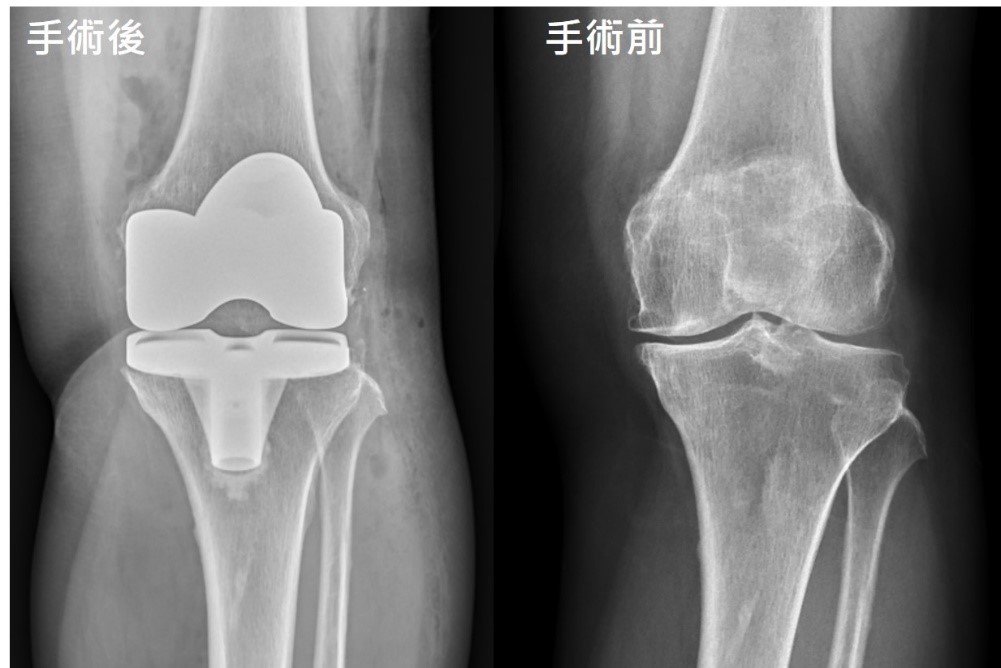Patients with degenerative joint disease have narrowed gap in knee due to worn cartilage or the gap is closed and lead to joint deformation. When the joint cartilage is worn, the bone underneath is exposed, causing friction and impact that leads to pain. Spur might occur due to the joint’s long-term weight bearing. Cartilage wear sometimes might create corpus liberum. Spur and corpus liberum may cause foreign objection sensation irritation, inflammation pain, or synovitis.
Acute onset of synovitis can cause red swelling and edema in knee and make patients too painful to walk.
We use conservative treatment for early stage of degeneration, such as proper rest, taking NSAID, heat compression, rehab, or weight loss. The other options for patients with mild to medium intensity of joint disease include hyaluronic acid injection in joint and taking glucoseamine. When rest, medication, or other conservative treatments cannot relieve the pain, surgery is recommended.
Most people do not know artificial joint well and misunderstand that they will be walking like a robot after joint replacement. However, joint replacement is to remove the worn articular facet and put in artificial joint, like putting on dental braces, to make the articular facet normal and smooth again. Modern artificial joint replacement is the most efficient treatment nowadays. Joint replacement not only significantly improves joint functions, but also corrects deformation. Most of all, it makes the pain disappear.

Who Needs Artificial Joint Replacement?
- Any types of arthristis that causes severe pain and when NSAID fails to have the symptoms under control.
- Severe joint wear and deformation.
- Limited joint mobility that impacts daily routines and causes pain at night when resting. The most common cause for joint replacement is degenerative joint disease in seniors.
As long as patients are not overweight, do not do weight bearing and do normal activities, 85 – 90% of the artificial joints can last for more than 10 years. It is possible to use the joint replacement for 20 plus years if patients maintain the ideal weight and avoid aggressive sport, such as running and jumping. In general, patients at the age of 65 or older may use the same joint replacement for the rest of the life.
The traditional joint replacement leaves a wound about 15 – 20 cm long. Now minimally invasive surgery is used for joint replacement to reduce the size of the wound greatly. Patients may get out of bed 3 days after the procedure and will be hospitalized for 5-7 days. With quick recovery, patients only need to use a cane for 1-2 weeks. Patients are highly satisfied with the results of the surgery.
The advantages of minimally invasive surgery include minimal bleeding, milder pain, lower need for pain medicine, small wound and good appearance, shorter recovery time and rehab time, savings on medical and social care costs, and lower infection risks.
Every surgery has its certain indication and relative risk. Prior to the surgery, doctors will evaluate patient’s health conditions, decide appropriate treatment option, decide replacement surgery type, and manage to lower the risks as much as possible.
Care after the Surgery: comply with rehab plans proposed by the professional rehab team to shorten the time for cane use in an efficient and safe manner. Please notify your doctor if you have cavity, gingivitis, or tooth extraction so your doctor will prescribe you proper antibiotics to avoid infections.

